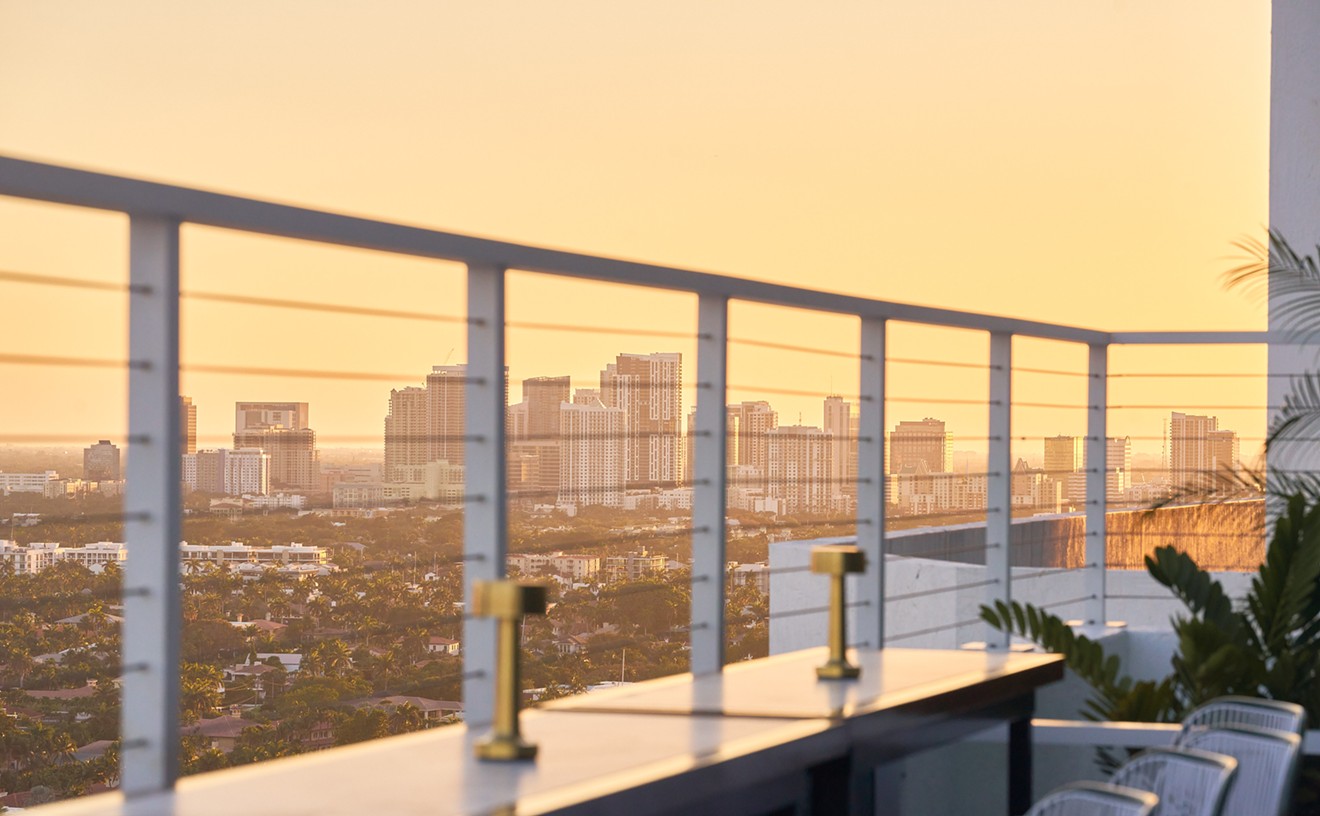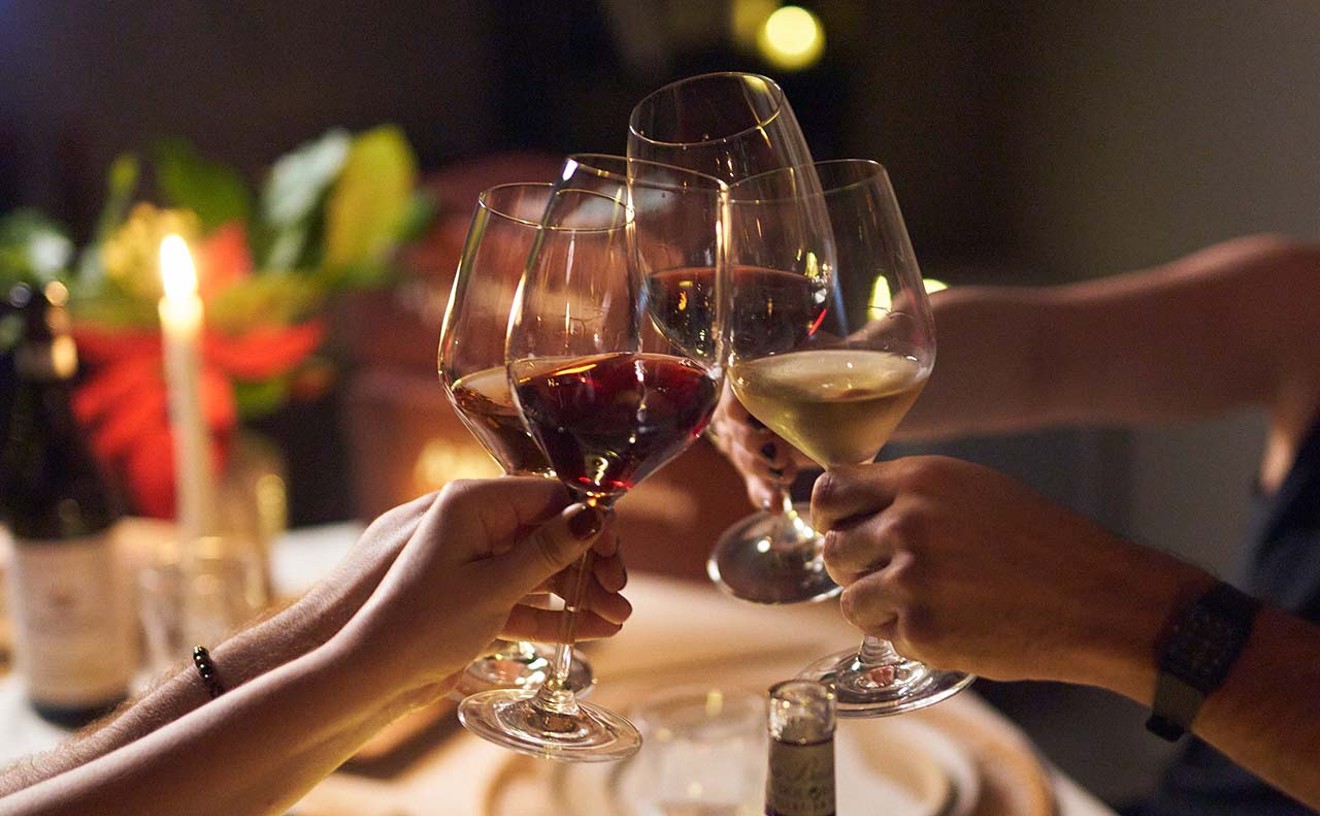Hara bara kebabs, described as dumplings and therefore anticipated as the usual heavy generic Indian appetizers, were cloud-light fritters, savory but nearly greaseless, complemented by several fresh chutneys both sweet and hot. Chicken pakora breast strips, so often sawdust-dry, were marinated and fried to perfect moist tenderness. The fish curry was mouthwatering; its fresh snapper pieces were yogurt-marinated and cooked in Jaipur's genuine tandoor oven before immersion in a rich, spicy curry sauce. Sag paneerwala's spinach was still delightfully crunchy, and its paneer was textured less like the usual cheese cubes than like rich fried flan. And the aforementioned paneer makhanwala, featuring the yogurt cheese in a creamy cumin-butter tomato sauce subtly accented with ginger, garam masala, fresh coriander leaves, and a myriad of other spices I couldn't even begin to identify, would alone have been worth the trip.
Okay, so Curaçao is not walking distance from your house -- but it's as far by plane as Manhattan, making it an easy long-weekend destination. And it does have plenty of nonfood attractions. It's just that most people don't know about them. Of its three main Netherlands Antilles neighbors, Bonaire is known for its nature and Aruba for its casinos. Curaçao is mostly known for producing that eponymous blue firewater that has fueled frat parties through the ages. Originally, in fact, I'd thought of the island as a plane transfer. The stop would be just long enough for a free-sampling tour of seventeenth-century landhuis (Dutch for plantation house) Chobolobo -- home of Senior & Co., which has been producing its famous/infamous liqueur from Curaçao's bitter mutant Valencia oranges for over 100 years -- before continuing on to Bonaire for its spectacular snorkeling.
But as I discovered to my astonishment, Curaçao is packed with cliff-backed white sand coves where exotic corals and fish displayed their beautiful selves under clear, calm waters, just several swimming strokes from shore. And due to the island's historic role as one of the Caribbean's pivotal ports for trade and immigration (reportedly, the island's population reflects roughly 50 nations) since 1499, the island has many other comparatively unheralded attractions that can't be found here in young Miami, such as the oldest continually operating synagogue in the western hemisphere, over 80 Dutch-style country estates dating to the early 1600s, and a world-class African-heritage museum, whose collection ranges from a real walk-in slave-ship hold to Louvre-quality fine art, located in the same Kura Hulanda complex as Jaipur.
Which brings up the vital point that the 50 nations' worth of seafaring immigrants who settled in Curaçao needed sustenance. And the cuisines of people from Portugal, China, Lebanon, Java, Denmark, and almost the whole continent of Africa (it was a major slave-trading center) are still reflected in the eateries of this tiny 38-mile-long island. Hence on my vacation there was little time for any of the aforementioned natural and historical wonders. On thirteen trips to Paris I've not once been to the Louvre. Let's eat.
To sample the greatest variety of local krioyo (Creole) food, there's a three-block stroll in the oldest quarter of the capital, Willemstad, starting at the picturesque floating market where purveyors sell fruits and vegetables from the boats that bring them in from Venezuela, 45 miles away. Next stop is the nearby circular New Market for typical walk-away snacks: empanada-like pastechi filled with fish, meat, or cheese; fresh-squeezed fruit shakes; and kos dushi, or sweets. But the real meals are at the Old Market a half-block farther on, where stalls offer an assortment of Curaçao's tastiest and most typical home-cooking: keshi yená (a hollowed-out ball of Dutch Edam cheese stuffed with an intensely complex stew of pumpkin, capers, olives, raisins, hot peppers, and meat); soups made of yambo (okra), kadushi (cactus), cinnamon-spiked plantain, or peanut; sides like cornmeal funchi, surely what polenta aspires to be when it grows up. Pay $4 to $7 per meal, grab a wooden bench, and chow down. Weekdays only, during lunchtime.
For the tastiest fresh fish, try Frente del Mar. Finding this tiny tiki-roofed waterside pavilion with just six outdoor tables ain't easy, since it's listed in no guides (hint: It's the first of two fish shacks on Awa di Playa, a dirt road fronting an inlet near the Sheraton, where you can ask directions). But it's well worth getting lost for chef Annie's whole charcoal-grilled kora (red snapper); what must be Curaçao's best deep-fried funchi balls, crisp outside and custardlike within; and what might be the world's best fresh karko (conch), tender strips lightly breaded, sautéed, and garnished with hot and sweet peppers. Open daily from 10:00 a.m. to midnight.
Indonesia was a former Dutch colony, so it's no surprise that terrific feasts of rijstaffel (literally "rice table"-- up to 40 small meat, vegetable, noodle, and dairy dishes with rice and an array of relishes) are available in several places, including Willemstad. For great Indonesian food with a great island view, though, locals prefer Gunung Mas, located on a hilltop several miles outside town center at Rooi Santoe 620. To sample the greatest number of dishes go with a group, or hit non-rijstaffel Friday and Sunday buffets. Open daily 5:00 to 10:00 p.m.
For fine dining there's no reason, even if Indian isn't your cuppa tea, to budge outside of the Kura Hulanda, a just-opened luxury resort that's also a historical preservation project. This village-within-a-village complex of dozens of Dutch/Caribbean townhouses, whose restoration has spearheaded the revival of Willemstad's rundown Otrabanda section, has, aside from Jaipur, elegant upscale Astrolabe. Here one can time-trip 200 years into the past while eating New World innovations (from ex-Bal Harbour boy-wonderchef Bernardo Espinel) like pumpkin cappuccino soup, lobster Cobb salad with tropical fruits, and bacon-wrapped cod sauced with champagne zabaglione. The Kura Hulanda complex is at Langestraat 8, in Willemstad.
That's a pretty full weekender. But if you want to throw a little nature into the mix and still keep eating, scope out a secret wild flamingo flock. Not in a formal fenced preserve, this bunch of birds blew over from Bonaire during a hurricane about fifteen years ago and have been hanging out ever since, directly across the road from an eighteenth-century landhuis called Jan Kock ... which, on Sunday mornings, does dynamite Dutch pancakes.










